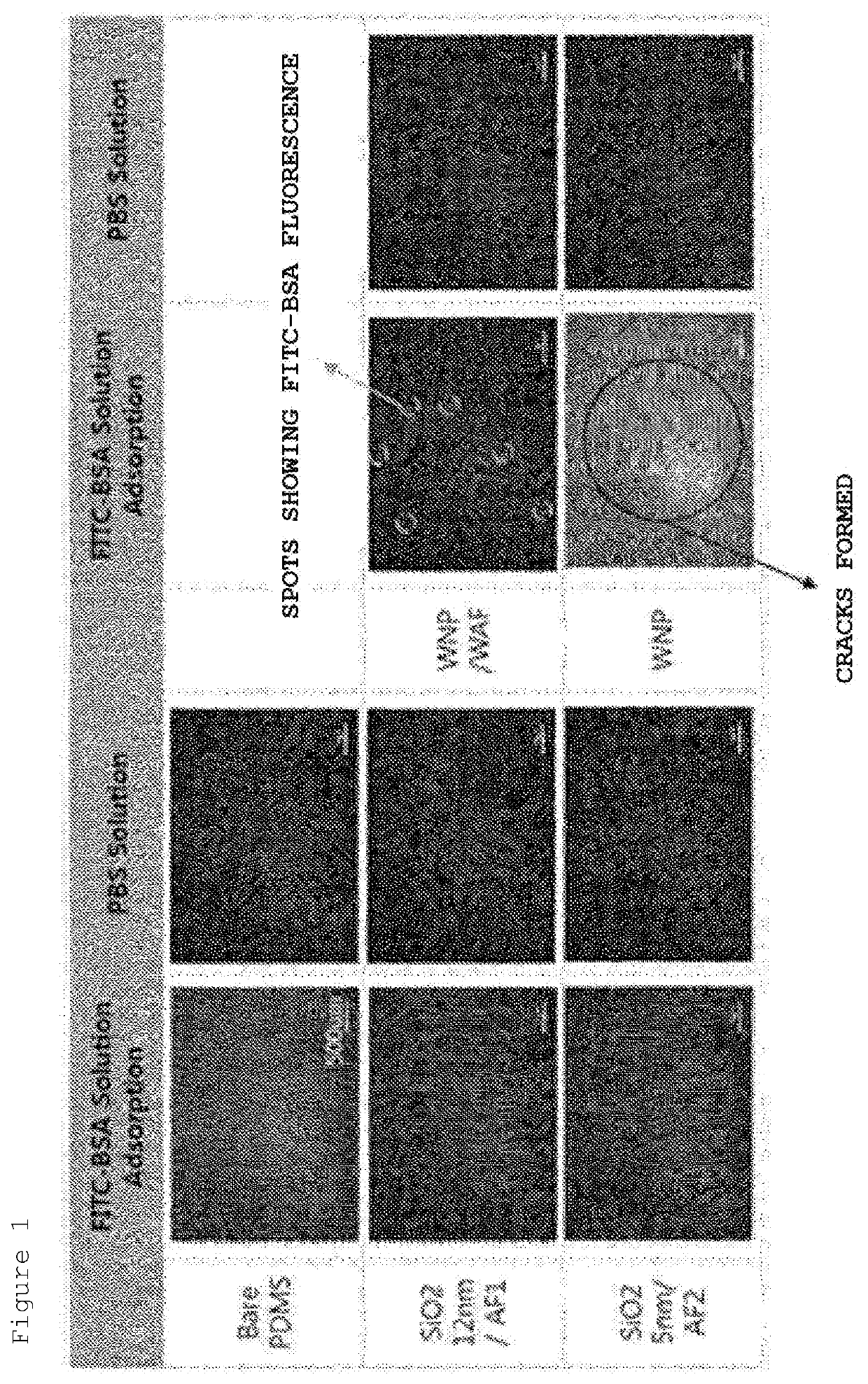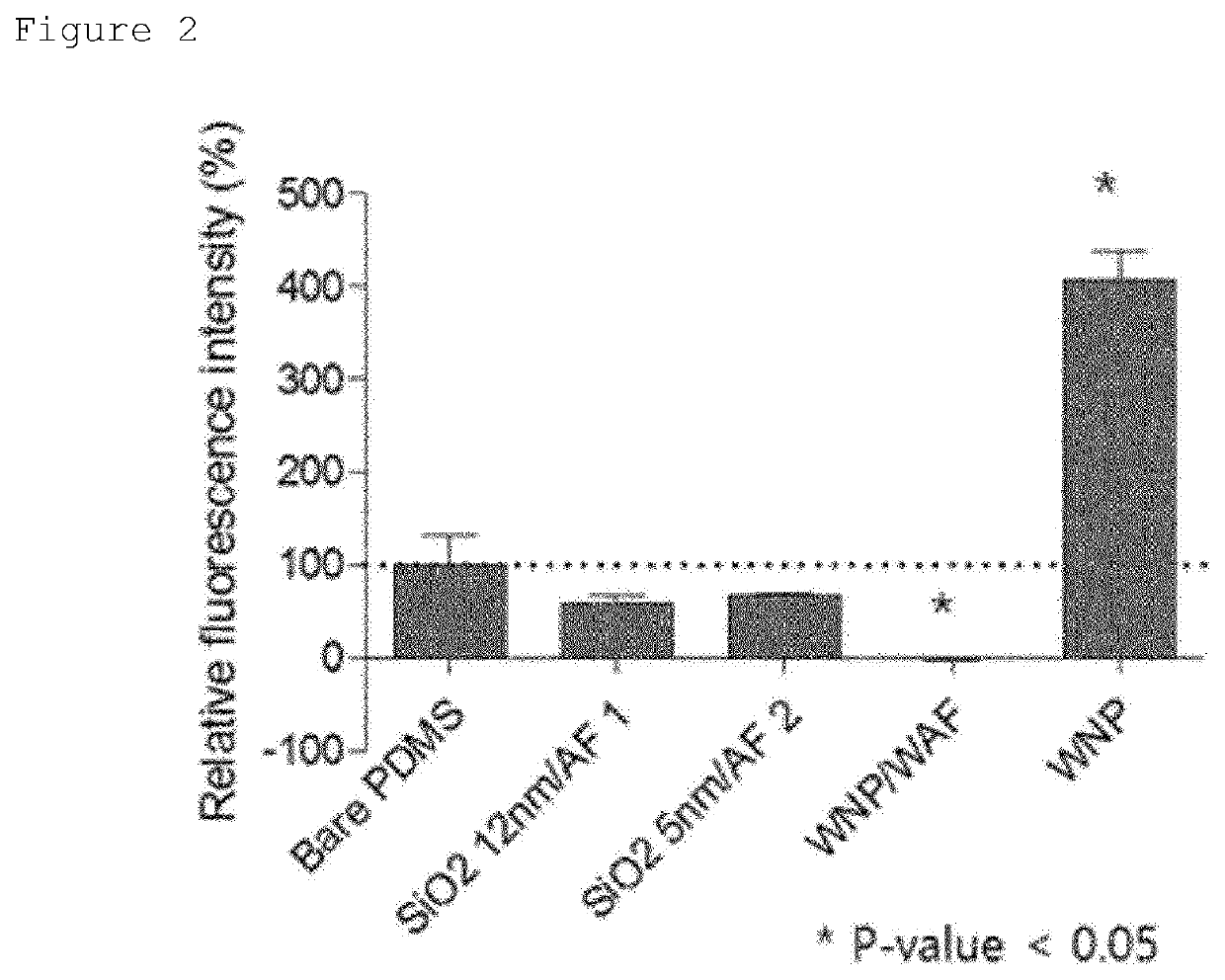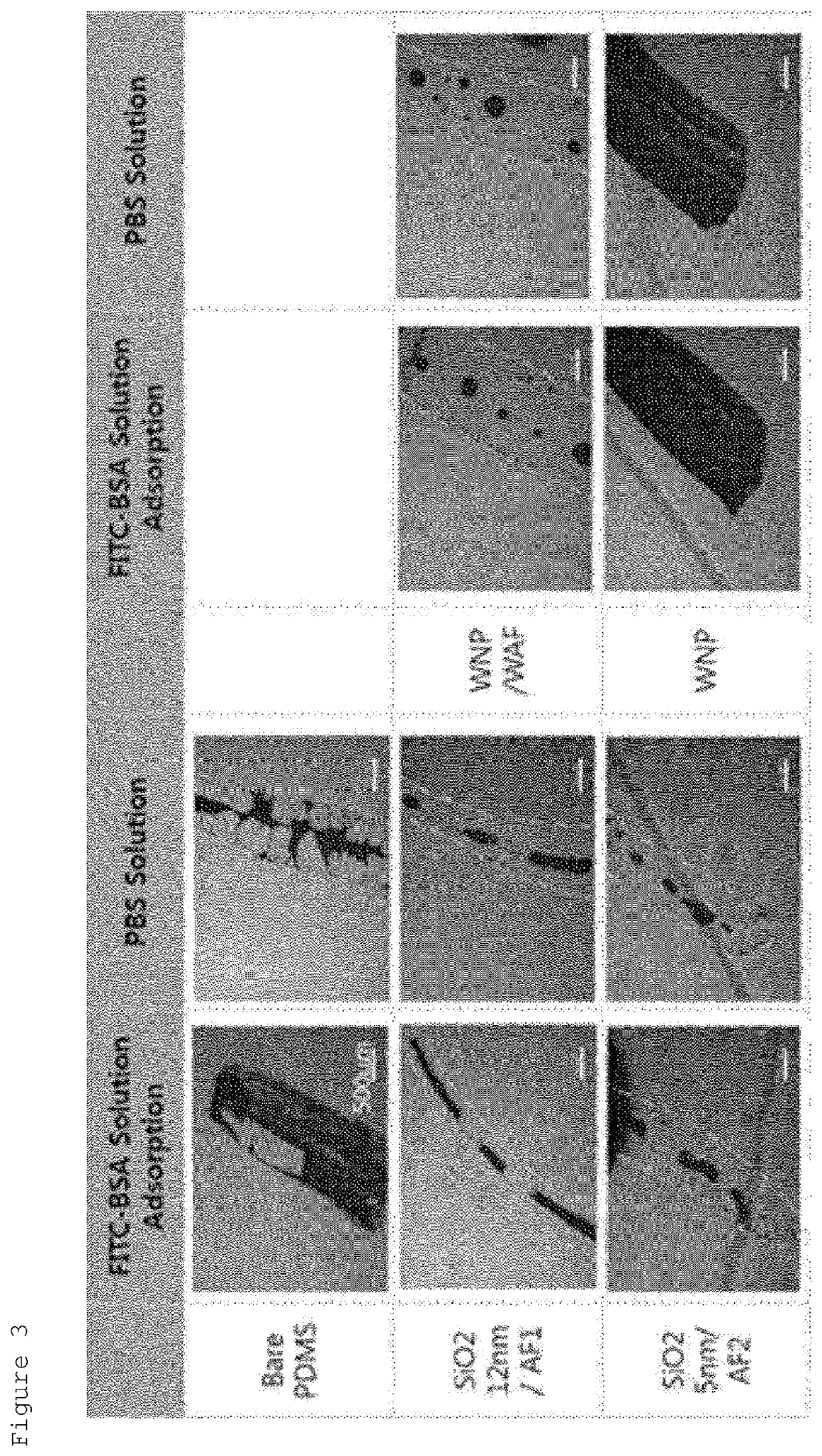Method for modifying surface of polymer substrate and polymer substrate having surface modified thereby
- Summary
- Abstract
- Description
- Claims
- Application Information
AI Technical Summary
Benefits of technology
Problems solved by technology
Method used
Image
Examples
example 1
Surface Modification of PDMS Coin
[0044]1.1. Plasma Treatment of Surface of PDMS Coin
[0045]First, a PDMS coin with a diameter of 1.5 cm and a height of 0.5 cm was manufactured and subjected to a plasma treatment under an atmospheric pressure at room temperature, and the plasma-treated PDMS coin was used for the cleaning of organic contaminants and the surface modification.
[0046]For the plasma treatment, a mixed gas of 25 sccm of an argon (Ar) gas and 30 sccm of an oxygen (O2) gas was used at an atmospheric pressure of 1 atm (760 Torr), and the formation of plasma was induced by applying power using RF power at 700 to 800 W, thereby treating the PDMS coin with plasma reciprocally at a speed of 15 mm / sec.
[0047]1.2. Coating of Surface of PDMS Coin Using Coating Agent WNP / WAF Containing Fluorine Compound
[0048]After the PDMS coin which was plasma-treated in Example 1.1. was taken out of the plasma reactor and coated to have a thickness of about 10 to 20 nm by spraying Nano-Primer (NP, pro...
experimental example 1
Evaluation of Protein Adsorption after Surface Modification
[0052]A 0.01% (0.1 mg / ml) FITC-BSA stock was prepared by dissolving an FITC-BSA powder in DPBS, and 600 μl of a 0.01% FITC-BSA solution or 600 μl of a DPBS solution was placed on the coating surface of the PDMS coin that was surface-modified in Example 1, and then left to stand for 3 minutes. The PDMS coin was washed with DPBS for 1 minute, and then strongly washed with distilled water contained in a squeeze bottle for 1 minute, and the residual moisture thereof was removed by a blower. Thereafter, optical images and fluorescence images of the surface of the PDMS coin were captured, and the fluorescence quantification was performed using the ImageJ program.
[0053]As a result, it could be confirmed that when the surface of the PDMS coin was coated with AF exhibiting hydrophobicity (Example 1 and Comparative Examples 1 and 2), the protein was scarcely adsorbed (400%). Further, when the surface of the PDMS coin was coated with N...
experimental example 2
Evaluation of Oil-Based Ink Adsorption after Surface Modification
[0054]On the surfaces of the PDMS coin onto which the protein was adsorbed (the PDMS coin that was left to stand in the 0.01% FITC-BSA solution) and of the PDM coin onto the protein was not adsorbed (the PDMS coin that was left to stand in the DPBS solution), which were prepared in Experimental Example 1, marks were drawn with a black oil-based ink pen at a predetermined speed, and the degree to which the oil-based ink was adsorbed onto the PDMS coin was observed.
[0055]As a result, it could be confirmed that when the surface of the PDMS coin was coated with AF exhibiting hydrophobicity (Example 1 and Comparative Examples 1 and 2), the ink took the form of water droplets, whereas when the surface of the PDMS coin was coated with NP exhibiting hydrophilicity (Comparative Example 3), the ink was adsorbed in the form of the mark drawn with the oil-based ink pen. In particular, even among the hydrophobic coatings, it could ...
PUM
| Property | Measurement | Unit |
|---|---|---|
| Pressure | aaaaa | aaaaa |
| Power | aaaaa | aaaaa |
| Hydrophilicity | aaaaa | aaaaa |
Abstract
Description
Claims
Application Information
 Login to View More
Login to View More - R&D
- Intellectual Property
- Life Sciences
- Materials
- Tech Scout
- Unparalleled Data Quality
- Higher Quality Content
- 60% Fewer Hallucinations
Browse by: Latest US Patents, China's latest patents, Technical Efficacy Thesaurus, Application Domain, Technology Topic, Popular Technical Reports.
© 2025 PatSnap. All rights reserved.Legal|Privacy policy|Modern Slavery Act Transparency Statement|Sitemap|About US| Contact US: help@patsnap.com



